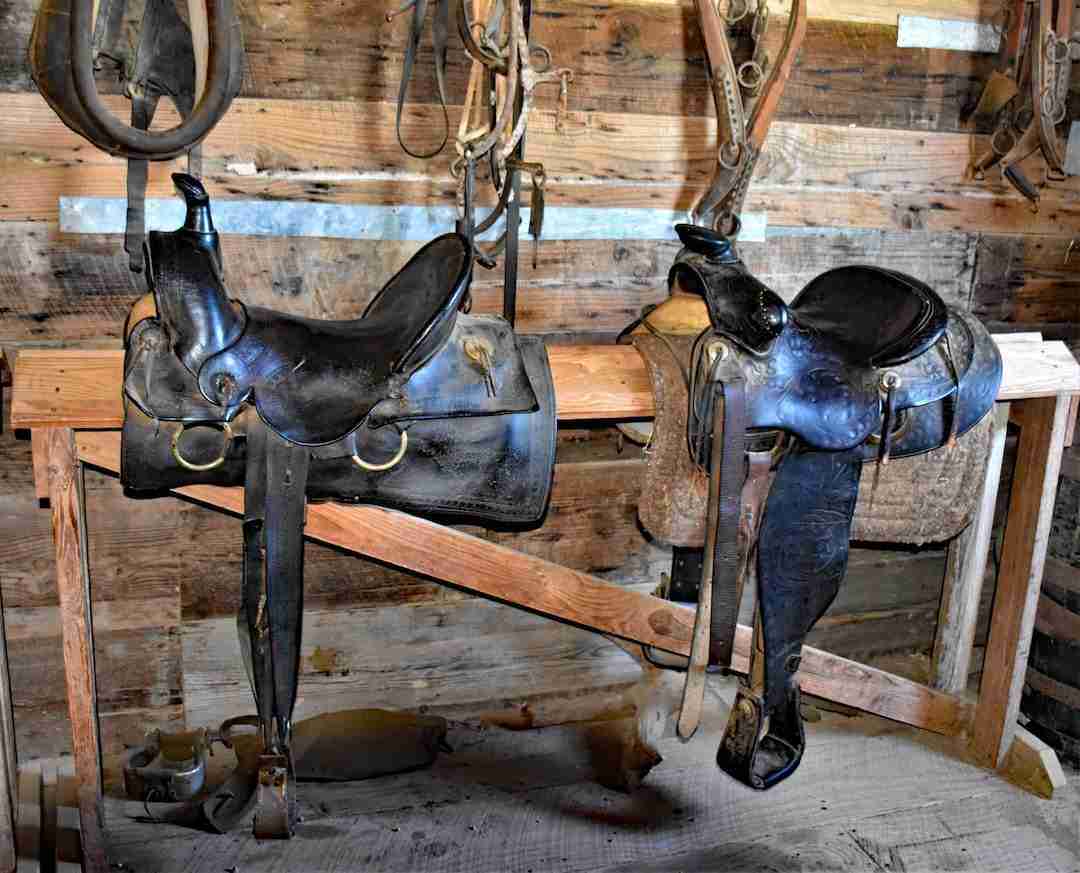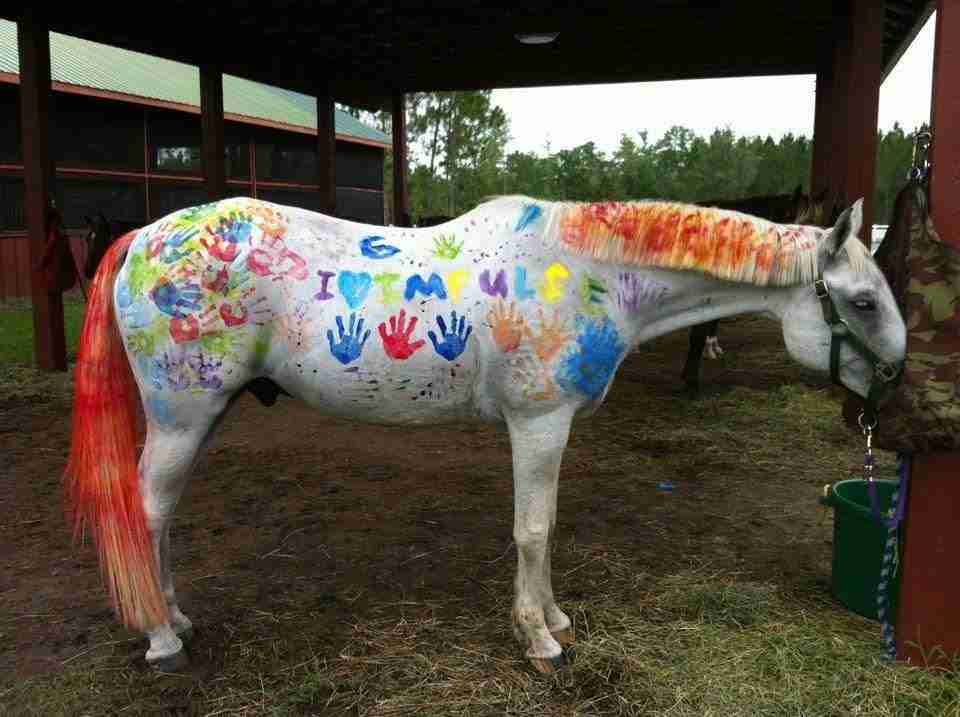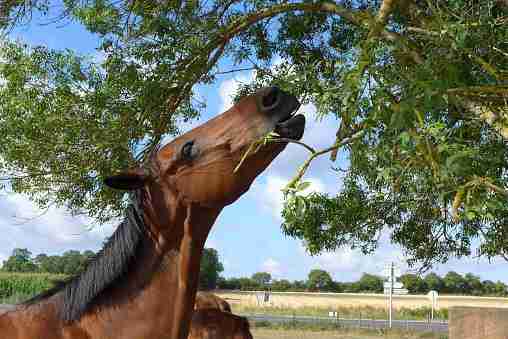Hancock horses are a controversial bloodline in the equestrian community. Some equestrians believe horses with this bloodline are challenging to handle and prone to bucking and therefore encourage other equestrians to avoid them altogether. In contrast, others believe Hancock horses are calm, speedy, and efficient, and praise this bloodline.
The father of the Hancock horse bloodline is Joe Hancock, who was welcomed into the AQHA Hall of Fame in 1992. Against the odds, Joe Hancock became the sire of the famous Hancock Horse bloodline. His offspring continue to wow crowds with speed and efficiency in the ring and on the track.
To better understand the Hancock horse bloodline, it may help to see how it has developed since 1923, when an unwanted and nameless “doggie colt” was foaled and given away by his breeder. Sired by John Wilkens and with a half-Percheron dam, this stallion was later given the name Joe Hancock, the name of his new owner who saw potential in him.
Joe Hancock’s History: Original Sire Of The Hancock Horse Bloodline
We already know some details of the history of Joe Hancock, but what was the sequence of events that brought him and his bloodline to fame? He surprised many breeders and outshone his competitors on the track and in the cutting ring. But what made him so special?
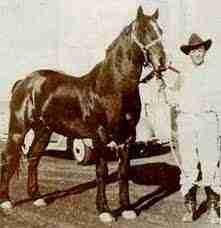
As mentioned, Joe Hancock was foaled in 1923 to a breeder who did not want a stallion, especially one of such a small stature. The breeder was John Jackson Hancock, and his ranch was situated on the Canadian breaks of the Texas Panhandle. One day, when John Hancock’s son paid him a visit, he told his son he was tired of looking at the “doggie colt” and gave it to him.
Joe took his brown stallion to Henrietta country and grew him into a horse with great stature. His horse almost looked like a freak of nature with his large limbs and strength, and he knew it had potential. It was, after all, the son of John Wilkens, the son of the 1897 racing star Peter McCue. Nevertheless, Joe wanted to see his horse race and persisted in getting him registered.
Joe took his horse to trainer George Ogles in Oklahoma to get him ready. Ogles didn’t think much of this unnamed horse, but he changed his mind on the first day of riding him. The horse with no name beat his brother’s racehorse with minimal effort on more than one occasion. After that, he was entered into races and kept winning.
George Ogles’ son bought the horse, now named Joe Hancock, for a staggering $1000, a considerable amount during the Depression. In the quarter-mile races, Joe Hancock won. In the longer-distanced races, Joe Hancock won because he created such a big gap at the beginning of the race that not even the long-distance horses could close the gap.
Joe Hancock repeatedly ran a quarter mile with a flying start in 22 seconds. He raced on North Texas and Oklahoma tracks for five years and beat many good Hancock Horses. Eventually, he could not be beaten or even entered into races, so Ogles sold him in late 1931 for retirement and stud purposes.
During his time as a stud on the Burnett 6666 Ranch, Joe Hancock started to raise the levels of running, roping, and ranching performances, even before the resurgence of Quarter Horse activity in the Southwest. Joe Hancock covered all types of mares, producing a range of Quarter Horses. His sons, grandsons, and great-grandsons continued to uphold his legacy by proving his sire line.
Joe Hancock’s offspring had – and still have – excellent qualities. They could run fast, perform well in the rodeo arena, and work cattle splendidly. In addition, they embodied true Quarter horses with their stamina, build, and intelligence. Traditionally, Hancock horses are sound and gentle with big black hooves, solid bones and limbs, and good longevity.
Joe Hancock died in 1943 and was honoured with a position in the AQHA Hall of Fame. Some of Joe Hancock’s sons that are famous Hancock horse sires are Red Man, Roan Hancock, Joe Tom, King County Joe, and Joe Hancock’s Steel Dust. Many other Hancock Horses from the Hancock horse bloodline have also claimed their position in equine history books for their exceptional skills and qualities.

Definition Of A Hancock Horse
In the American Quarter Horse Association’s (AQHA) registry, Joe Hancock was number P-455. Joe Hancock preceded the establishment of the AQHA in 1941. Still, the Hancock horse bloodline was not accepted in their registry because it was unregulated. However, the directors of AQHA later agreed that these Hancock Horses fitted the bill for American Quarter Horses.
According to the Hancock Horses website, for a horse to be registered as Hancock-Bred, it needs to have a Joe Hancock blood percentage of 10% or more. If the Joe Hancock bloodline is calculated as less than 10%, the horse will be considered Hancock-influenced.
Some Hancock horse breeders prefer breeding stock with higher percentages than 10%. However, many breeders believe that the minimum bloodline percentage of 10% is likely to influence the physical appearance of the offspring.
Below is a table depicting the generational percentages of the bloodline, plus an example of how to calculate a horse’s Hancock bloodline.
| Generation | Percentage |
| 1st Generation | 50% each |
| 2nd Generation | 25% each |
| 3rd Generation | 12.5% each |
| 4th Generation | 6.25% each |
| 5th Generation | 3.125% each |
| 6th Generation | 1.5625% each |
| 7th Generation | 0.78125% each |
| 8th Generation | 0.390625% each |
| 9th Generation | 0.1953125% each |
| 10th Generation | 0.09765625% each |
Calculation Example
Suppose you have a pedigree with Joe Hancock once in the 4th and 5th generation, once in the 7th generation, twice in the 8th generation, and four times in the 10th generation. The calculation would be as follows:
6.25 + 3.125 + 0.78125 + (2 x 0.390625) + (4 x 0.09765625) = 11,328125% Joe Hancock blood.
Famous Hancock Horses
Numerous Hancock horses have risen to fame, like their late sire, Joe Hancock. Of his offspring, 107 are registered with the American Quarter Horse Association. Let’s take a look at some of the famous AQHA registered Hancock horses and their noteworthy offspring:
Other Articles You May Also Be Interested In
- Why Horses Show Their Teeth
- What Are Ergots and Chestnuts on Horses?
- What Is A Grulla Quarter Horse?
- Who Is The Boss Mare And What She Means To The Herd
- Why Do Horses Nod Their Heads?
- Rebel Cause was the 1962 Champion Quarter Running Aged Stallion.
- Big Foot Charley, awarded 1946 Racing Register of Merit.
- Black Lable, Racing Register of Merit in 1946.
- Bob’s Folly produced 18 AAA offspring in 1962.
- Red Man, by Joe Hancock, was a famous red roan awarded Racing Register Of Merit in 1943 and Open Performance Register Of Merit in 1952.
- Spotted Spider, Racing Register of Merit in 1946.
- Steel Bars was the Honor Roll Halter Stallion of 1957.
- Wahoo, Racing Register of Merit in 1944.
- Wonder Lad was a gelding awarded 1947 Racing New Track Record and 1946 Racing Register Of Merit.
Notable Hancock Horse Sires And Dams
While many Hancock horses are famous for their achievements in the ring or track, some sires and dams were bred to maintain this worthy bloodline. As a result, their offspring have excelled in their various fields.
Below are some of the Hancock sires and dams that have produced highly competitive offspring.
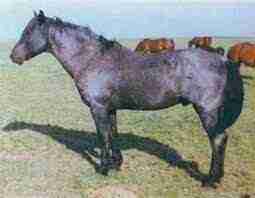
| Notable Sires in The Hancock Horse Bloodline | |
| Name of Sire | Description |
| Blue Valentine(Born in 1956) | Blue Valentine was a prized blue roan that produced many broodmares. The offspring from his broodmares won many awards in roping and ranch activities. |
| Buck N Badger (born in 1989) | Buck N Badger was explicitly bred to maintain a high percentage of Joe Hancock blood (26.56%) and Buck Hancock blood (31.25%), thereby preserving the best of Joe Hancock. Even at the age of 17, his disposition and conformational traits earned him 9 open AQHA reigning points. |
| Dos Pesos (Born in 1952) | Dos Pesos sired Woody’s Request AAA and Quatro Pesos AA. |
| Hot Heels (Born in 1944) | Hot Heels produced Mona Leta AAA, Johnny Do It AAA, Bob’s Folly AAA, Mary Sunshine AAA, Bar Heels AA, and Snakey Bend A. |
| Joe Tom (Born in 1936) | Joe Tom sired Catch Me Boy A and Miss Roxy AA. |
| Little Black Joe (Born in 1937) | Little Black Joe by Joe Hancock, sired Betty Joe Jeamer, Deacon Joe, Honest John, Joe Pop, Little Boy Joe, and Little Wagon Joe – all qualifiers of the show Register of Merit. |
| Little Joe The Wrangler (Born in 1935) | Little Joe The Wrangler sired five A get. |
| Red Man (Born in 1935) | Red Man sired John Red AAA, Apache Agent AAA, Moonshine AAA, Worryman AA, Wampus Kitty AA, Red Gown L. AA, Red Mamma AA, and 10 A Hancock Horses. |
| Steel Bars (Born in 1953) | Steel Bars sired Belinda Bar AAA. |
| Worryman (Born in 1945) | Worryman sired Roan Man AAA, Dos Pesos AAA, Cheri Man AA, and Mr. Man A |
| Notable Dams in The Hancock Horse Bloodline | |
| Name of Dam | Description |
| Bankette (Born in 1952) | Bankette, sired by Worryman, produced Spotted Bullet AA and Rebel Cause AAA. |
| Jo Chick (Born in 1951) | Jo Chick is the dam of Barchick AAA and Miss Hi Jo AAA. |
| Joan (Born in 1940) | Joan was sired by Joe Hancock and is the dam of Jo Chick, Hot Heels, Steel Bars, and Joan’s Josephine. Each has AAA or AA produce or get. |
Hancock Horses In The AQHA Hall Of Fame
The American Quarter Horse Hall of Fame and Museum is based in Amarillo, Texas, and was created by the AQHA. Hancock Horses and people who have contributed to the development and improvement of the American Quarter Horse. To be honored as an inductee in the hall of fame, these people and horses would have shown outstanding capabilities in various fields over a few years.
As mentioned, Joe Hancock was initially not considered American Quarter Horse material, and the AQHA did not register him, despite his achievements. However, the directors of AQHA changed their minds, and now the Hancock bloodline is considered a part of the foundation’s breeds, including Joe Hancock’s grandsire, Peter McCue.
In the AQHA Hall of Fame, you will find quite a few of the Hancock horses represented. However, we will just look at three for now.
Joe Hancock
Joe Hancock died in 1943 at the age of 20 and received his place in the Hall of Fame in 1992. He was recognized for his fantastic racing skills and contribution to improving American Quarter Horses’ bloodline.
Coys Bonanza
Coy’s Bonanza was born in 1959 and died in 1976. His dam was Sparky Joann, and his broodmare sire

was Little Joe the Wrangler. Coy’s Bonanza received his place in the Hall of Fame in 2015 for contributing as a sire to American Quarter Horses. His foals became high-point Hancock Horses in most categories: working cow horse, reining, halter, western pleasure, and roping.
Shue Fly
Shue Fly was a famous racehorse that carried the Hancock bloodline. This mare was known to be able to win a race even if she started at the back, and her most memorable race was on 15 March 1942. Just after the start of the race, she overjumped as she got a fright when her rider hit her with his hat. She fell to her knees with her rider landing on her neck.
However, this chestnut mare rose up and, despite being seven lengths behind the second-last horse, she won the race by a nose, beating Nobody’s Friend. That afternoon, she was bought by an AQHA member for $3000 and continued to outperform other Hancock Horses in her field. She was sired by Booger Red, son of Red Man.
Shue Flue was foaled in 1937 and died in 1963 at the age of 26. Shue Fly was inducted into the AQHA Hall of Fame in 2005 for her contribution to horse racing.
Conclusion
The Hancock horse bloodline is recognized in the American Quarter Horse Association. Initially, the AQHA did not accept this unregulated breed. However, Joe Hancock’s outstanding performance on the racetrack, combined with his stature, intelligence, and demeanor, convinced them otherwise. As a result, the Hancock bloodline is well represented in American Quarter Horses.
Resources
https://en.wikipedia.org/wiki/Joe_Hancock
https://www.allbreedpedigree.com/buck+n+badger
https://www.aqha.com/-/bloodlines-of-the-breed
https://www.aqha.com/-/joe-hancock





